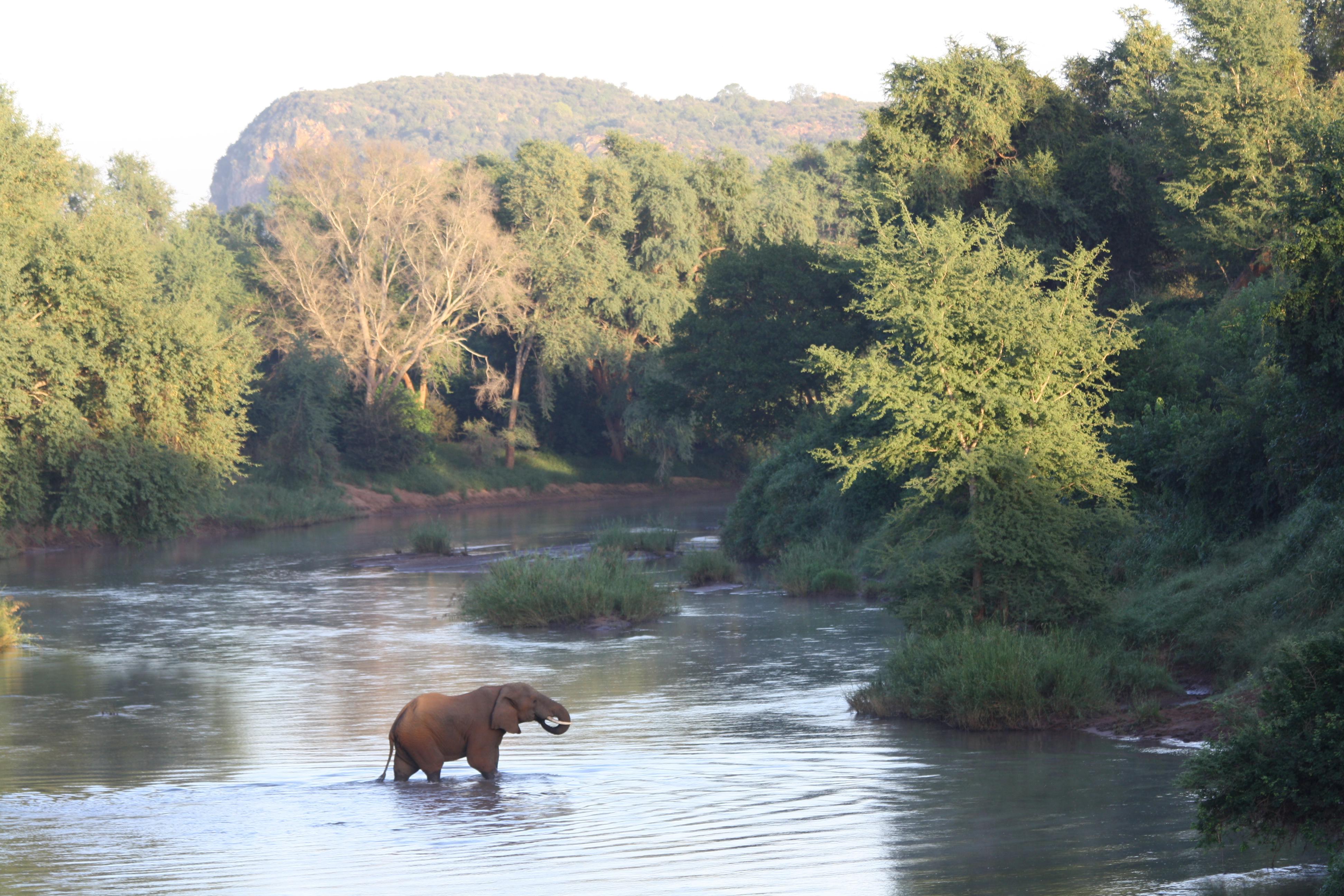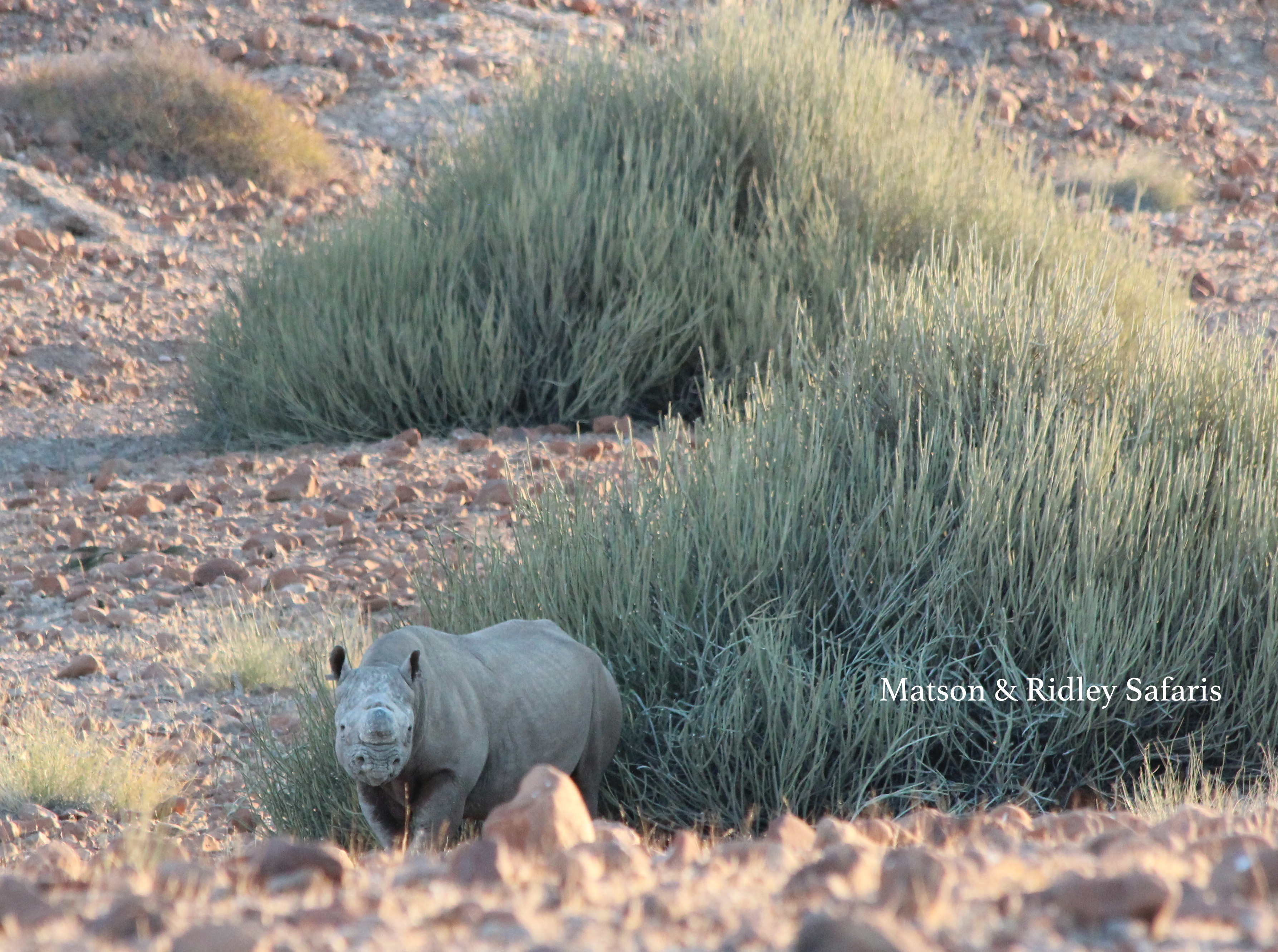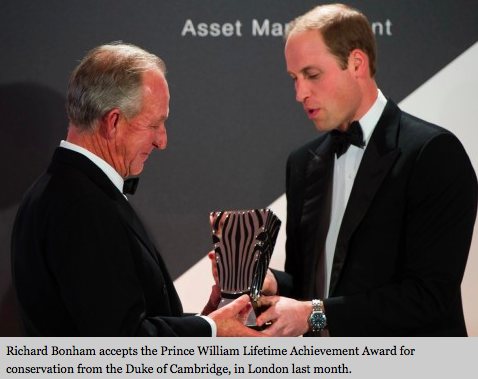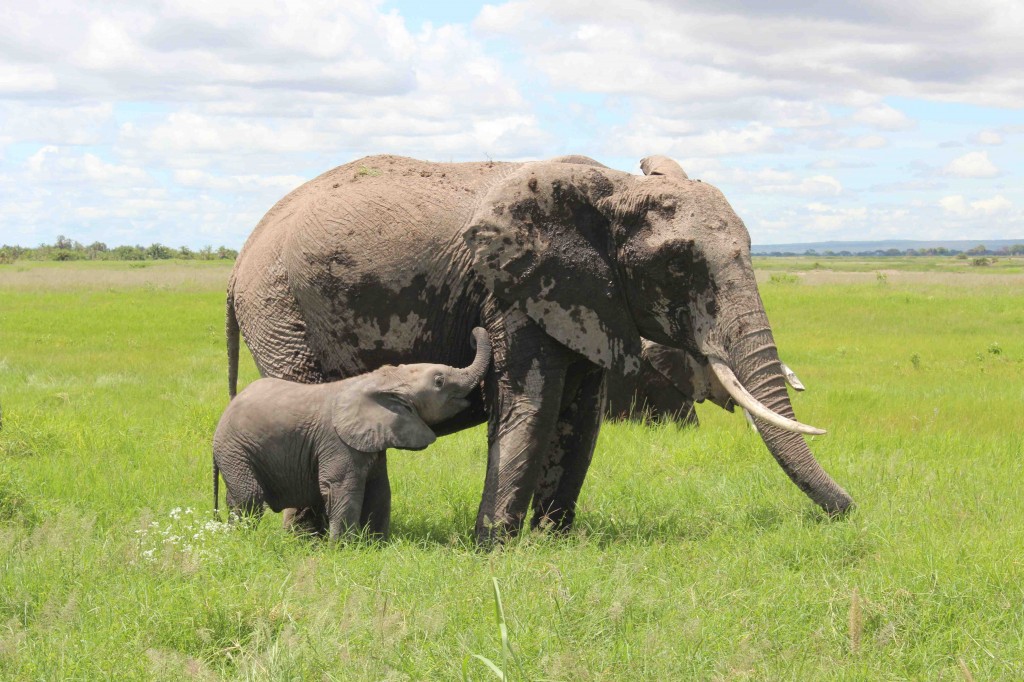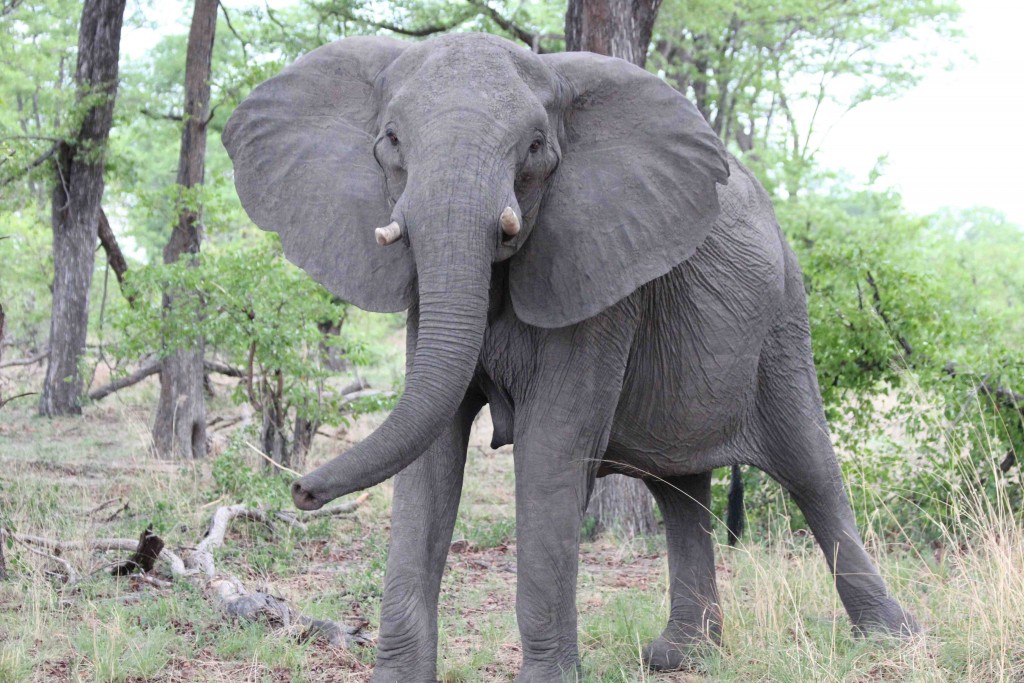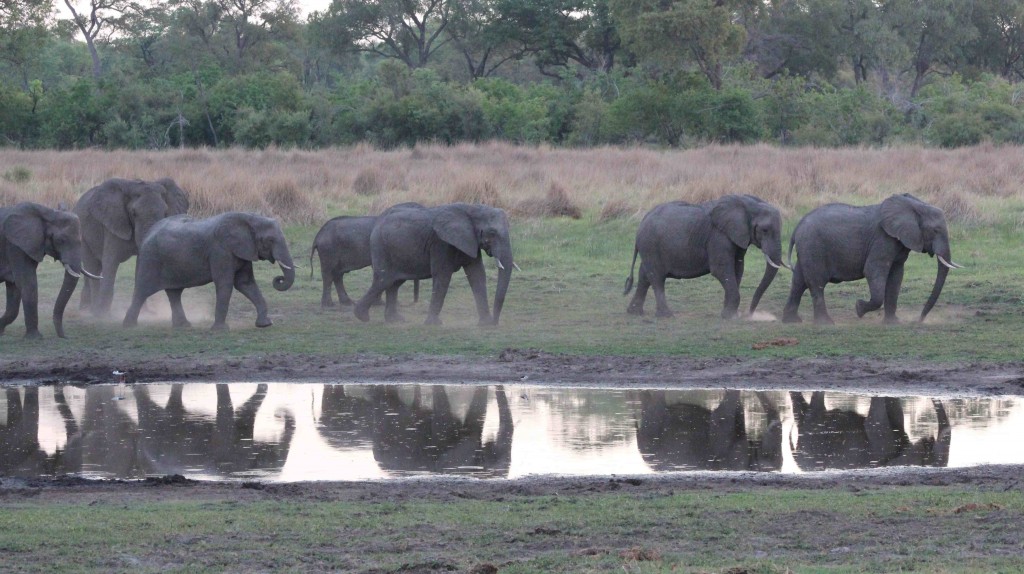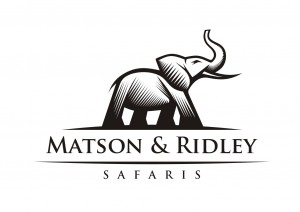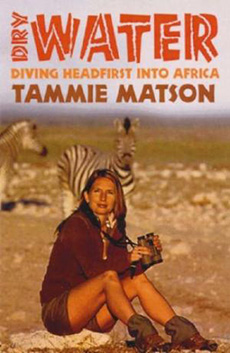The Good, Bad & Hopeful News for Africa’s Pachyderms
CITES’ latest report on the results of the MIKE (Monitoring the Illegal Killing of Elephants) programme has some good news in it for elephant populations and some not so good. The overall number of elephants being killed for ivory has stabilised, after a peak in 2011, but there are still more elephants killed every year than are born (see BBC story).
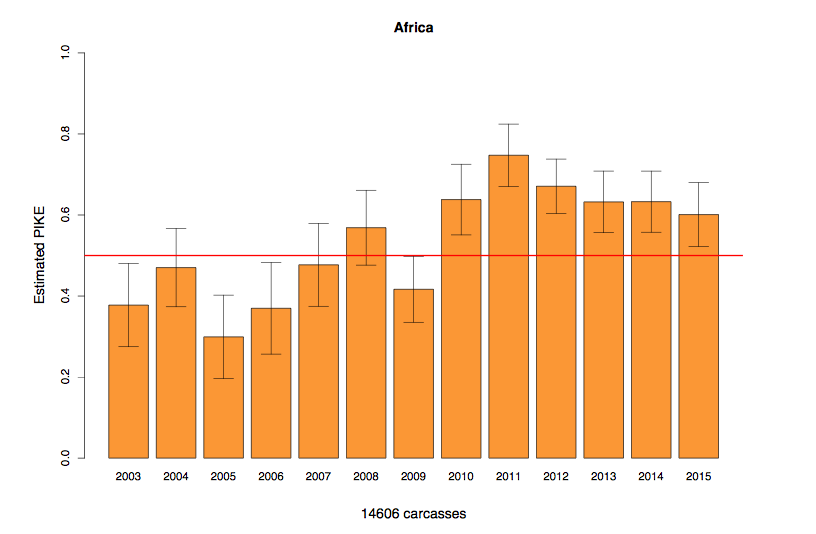
Graph showing proportion of total elephants found killed that were poached, from the MIKE programme, 2015. Note the declining trend in poaching since the 2011 peak.
In Kenya, things appear to be looking up, especially in Tsavo National Park, with an overall decline in poaching reported. Well done Kenya! It hasn’t been an easy few years for Kenya, with the ecotourism industry hard hit by unfounded fears of ebola (which never came close to the country) and a couple of terrible terrorist attacks, but nonetheless their commitment to turn things around for elephants appears to be paying dividends.
Of concern however is the upward trend in poaching in the world famous Kruger National Park, and a couple of other southern African sites including Chewore, Zimbabwe. In southern Africa, poaching levels are still well below the sustainability threshold, but the upward trend is of concern, especially as this part of the world is considered a real refuge for elephants.
Central and West Africa continue to be of serious concern, with poaching levels still well above the sustainability threshold for elephant populations. Read the full report here.
So overall, I think this latest CITES report suggests the great efforts made in recent years, at all ends of the spectrum from demand reduction to anti-poaching, are making a difference in some places, but it’s definitely not the time to be complacent.
What about rhinos? The recent report by IUCN showing that overall poaching across Africa for rhinos is at its highest since 2008 shows that poaching is by no means slowing down across Africa for other thick-skinned large mammals either. The South African government recently reported that rhino poaching was down in South Africa in 2015 compared to the previous year, albeit by a very small number (about 40). The big picture outlined in the IUCN report just out suggests the fight must go on if rhinos are to have a future in the wild.
Why go on fighting this battle? Lots of reasons, but a big one is that it IS possible to win.
I take heart from countries like earthquake-hit Nepal, which has had ZERO poaching of its greater one-horned rhinos in three of the past five years. Part of their success in conservation following the civil war (which took a hard toll on wildlife) is reported to be their tough penalties on poaching and a streamlined judicial process dealing with offences.
And then there is Uganda, which has seen its elephant population increase 600% from 700-800 in the 1980s to over 5000 in 2015. These countries demonstrate that it is possible to turn things around; and that political will and hard line processes are key to success. It’s amazing what can happen when governments take this problem seriously.
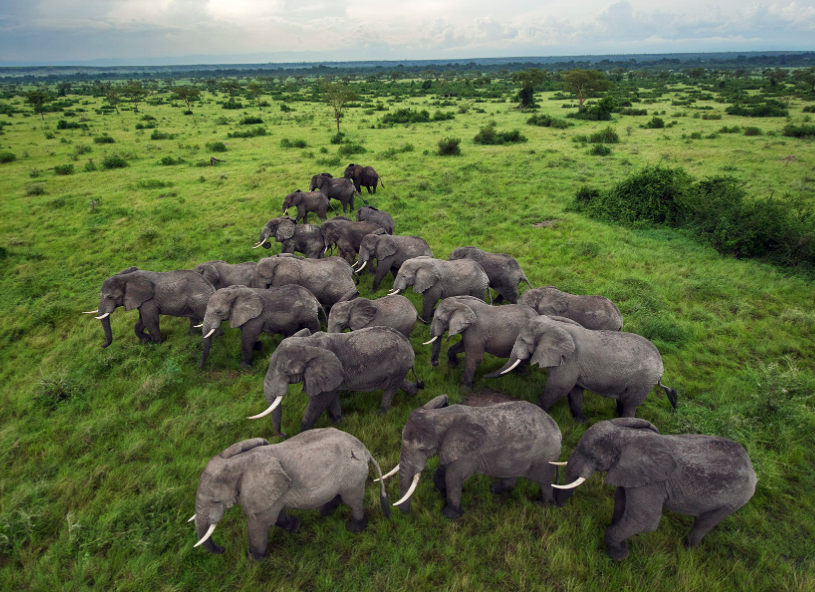
Elephants in Queen Elizabeth National Park, Uganda, are doing better than in the 1980s by a long way (photo by National Geographic)
Elephant Round Up
We’ve seen some promising signs from China in the last week in relation to the ivory trade driving elephant poaching in Africa, with the Chinese government conducting their third ivory destruction in the last eighteen months and committing to phase out its legal, domestic ivory industry. No time line has yet been given, but it is encouraging to see the Chinese taking stronger measures and the steps have been lauded by conservation organisations.
So are attitudes changing? A survey by WildAid showed that 95% of Chinese supported a total ban on ivory sales. Another one by WildAid, the African Wildlife Foundation and Save The Elephants showed that three quarters of Hong Kong residents supported a ban on ivory sales there too. Hong Kong is a major transit point for ivory to Chinese market places.
The Let Elephants Be Elephants team participated in an awareness and fund raiser for elephants in Hong Kong in November last year, run by the Hong Kong Elephant Society. Our campaign has always been focused on South East Asia, but we are now starting to form some good working partnerships with organisations in Hong Kong as well.
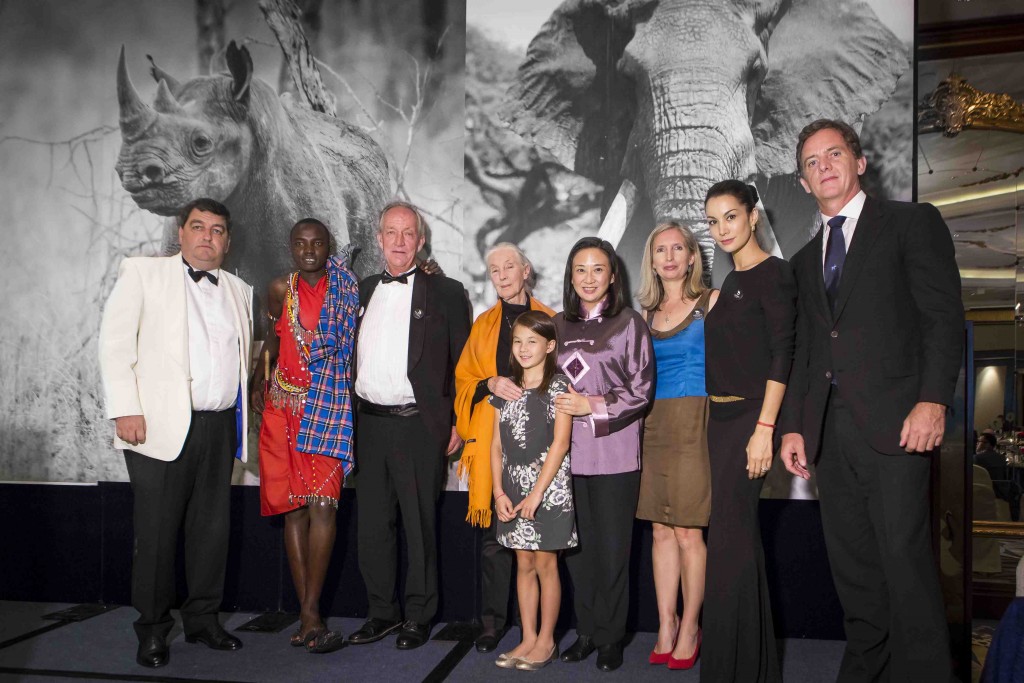
HK Elephant Society co-founder Colin Dawson, Maasai spokesperson John Tabula, Big Life’s Richard Bonham, Jane Goodall, one of the amazing kids who started the movement which led to HK’s first ivory crushing, pro-environment legislator Elizabeth Quat, the LEBE team (me and Nadya Hutagalung), HK Elephant Society co-founder Ted Hodgkinson.
Other organisations that participated on the night were the Big Life Foundation, David Sheldrick Wildlife Foundation and the Jane Goodall Foundation.
There were some great heroes of conservation in the room that night. In one of the most special moments of my career, I had the pleasure of meeting Dr Goodall (photo above), whose book “In The Shadow of Man” I read when I was dreaming of becoming a wildlife researcher back in the early 1990s. Richard Bonham, COO of Big Life, went on from our event in Hong Kong to London to accept Prince William’s Life Time Achievement Award for conservation, so we were in fine company! Also there in support of elephants were the pro-environment Hong Kong politician, Elizabeth Quat and Hong Kong For Elephants‘ campaigner Alex Hofford. The night raised significant funds for three organisations, including a donation to LEBE’s Thailand demand reduction campaign.
Following successful launches in Singapore, Hong Kong, the Philippines and Indonesia, the Let Elephants Be Elephants campaign is planning to focus on Thailand’s ivory market in the next phase of the campaign, and this year so far we’ve been working on bringing in funds and developing the partnerships to roll out the campaign.
We’re heartened by the fact that the Thai government has taken some strong measures towards controlling their ivory markets in the last year, including strengthening laws around ivory trade and clamping down on registration of ivory across the country. We don’t entirely know what this means yet for ivory markets and elephants. LEBE co-founder Nadya Hutagalung found fewer stalls selling ivory in Bangkok during her visit there earlier this year than last year during the filming of the LEBE documentary, which was encouraging, but may also suggest the sellers are uncertain of what the future holds. What we don’t know is whether ivory sales have simply gone underground, and how long existing measures will be enforced. The need for education to reduce demand for ivory remains as strong as ever.
So what’s happening in Africa? Well, the bad news this week has been the WCS report showing the devastating loss of half of Mozambique’s elephants in the last five years. In neighbouring Tanzania, new census figures have shown a decline of 60% of the nation’s elephants in the last five years. This is happening right now! In addition, in western and central Africa, the ivory war is as bloody as ever.
Thankfully there was some good news in amongst the bad this week in the elephant world. This week I was heartened to see a report by WCS from Uganda showing that their elephant population is on the rise, with more than 5000 across the country (still quite low numbers in the big scheme of things however). And don’t forget that in countries like Botswana, the country with the world’s largest elephant population, they are doing just fine. I saw a commentary just today suggesting that South Africa has ‘too many’ elephants, a term I used to hear a lot when I lived in southern Africa in the early 2000s, but not so much these days. Does South Africa have too many elephants or just too little land?
With some countries at threat of losing most or even all of their elephants in the next decade, and others with good, strong populations, we need to look at Africa’s elephant population as just that – Africa’s – rather than one or another country’s elephants, because the species roams across human-defined border as if they don’t exist. The good thing about this is that elephants can expand into new areas when they know they are safe, repopulating former ranges across borders, and that’s where the idea of Africa as a series of interconnected parks and communal conservancies gets interesting. This is already happening in several countries, with great results.
I guess my point this week is that it’s easy to get overwhelmed by all the stories out there about the ivory wars, but bear in mind that both Africa and Asia are big places and the situation is different everywhere. While we might be losing the ivory war in some countries, and we may well see localised extinctions of elephants in some parks and/or countries in the next decade, we’re starting to see improvements in others. So don’t lose hope.
Remember that if you love Africa and you love elephants, make your next safari an ethical one that ‘gives back’ to the local communities who live with elephants and ensure their survival. Drop me a line for more info on joining one of my conservation focused safaris that make a difference.

